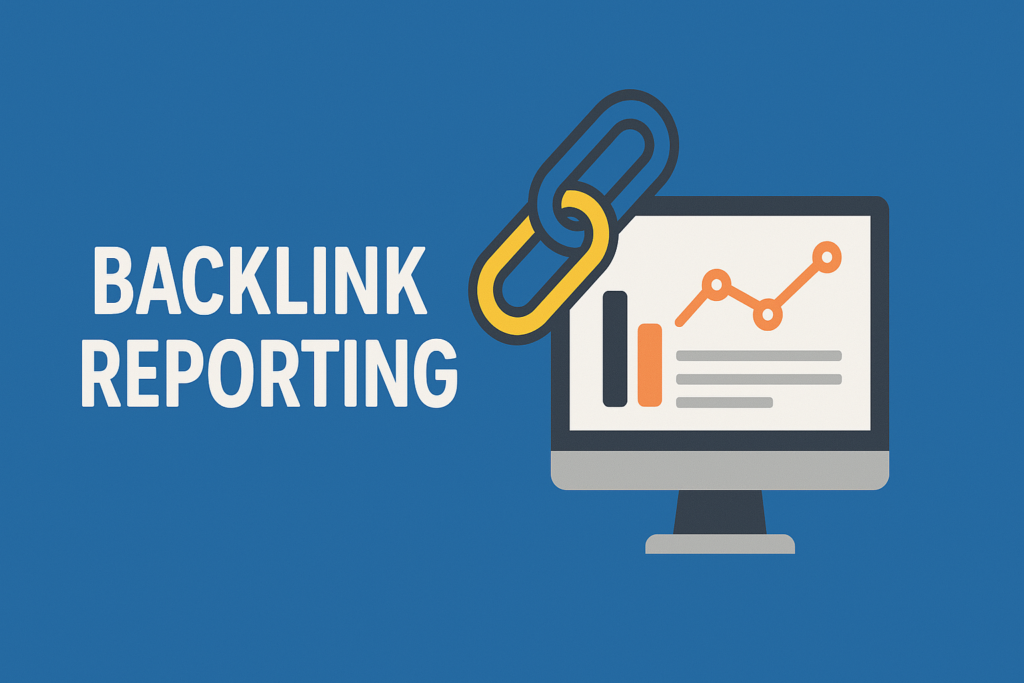
We keep building links with different techniques, such as linkable assets, guest posting, etc. But how do we know if our backlink-building efforts are working? The answer is backlink reporting.
As an online business owner, you know that backlinks are one of the most important aspects of SEO. You also know that it’s essential to keep track of your backlink progress – after all, you don’t want your competitors to outrank you!
In this guide, we will teach you everything you need to know about backlink reporting. We’ll cover backlinks, why they’re essential, and how to monitor your progress using backlink reports. Plus, we’ll give you a few tips on how to improve your backlink strategy. Let’s get started!
What Is A Backlink?
Backlinks are an important ranking factor for SEO because they show search engines that your site is popular and relevant. A backlink is simply a link from one website to another. The more backlinks you have, the higher your site will rank on Google and other search engines.
We know it was easy to trick Google back in the day with low-quality backlinks, but that’s no longer the case. As a result, these days, you need quality backlinks from relevant, authoritative sites if you want to rank higher in search results.
What Is Backlink Reporting?

Backlink reporting is the process of tracking your backlinks over time. By monitoring your backlink progress, you can see which backlinking strategies are working and which need improvement. Additionally, backlink reports can help you identify opportunities to get more backlinks from high-quality websites.
Now that we’ve answered the basics, let’s dive into the details of backlink reporting!
Things To Consider In Backlink Reporting
There are a few things you should keep in mind when you are creating a backlink report, such as:
- Website
- Anchor text
- Backlink Quality
- Number of Backlinks
- DoFollow/Nofollow links
- Link Type
- Referring Domain
- Authority
- CountryTarget
- Spam score
Let’s Take a look at each of them in turn.
Website
The first thing you need to do is check the quality of the website linking to you. There are a few things you can look at to determine the quality of a website, such as:
- Content: Is the content well-written and relevant to your industry?
- Design: Is the website design professional and user-friendly?
- Reputation: Does the website have a good reputation?
- Backlinks: Does the site have any backlinks from high-quality websites?
To get more backlinks from a particular website, it’s essential to ensure the website is high quality.
Anchor Text
The anchor text is the words used in the backlink. For example, if a backlink says “click here,” the anchor text would be “click here.” Remember to Vary your anchor text so that it looks natural to Google. However, If your backlinks have the exact anchor text, Google may penalize your website. So, It’s essential to have a backlink with a different keyword.
Backlink Quality
Google looks at the quality of backlinks when determining rankings. There are a few things you can do to check the quality of a backlink, such as:
- Check the backlink profile: A backlink profile lists all the links pointing to a website.
- Check the PageRank: PageRank is a metric developed by Google to measure the quality of a backlink.
- Check the domain authority: Domain authority is a metric developed by Moz to measure the quality of a backlink.
Number Of Backlinks
The number of backlinks is an important metric to track because it shows. If the number of backlinks is increasing, your backlinking efforts are working. However, if the number of backlinks decreases, it’s a sign that you need to improve your backlinking strategy.
DoFollow/Nofollow Links
DoFollow links are backlinks that pass authority and help improve your website’s SEO. Nofollow links are backlinks that don’t pass authority and don’t help improve your website’s SEO.
It would help if you tracked both DoFollow and Nofollow links because you want a healthy mix. Many Nofollow links won’t help your website’s SEO. Too many DoFollow links may look suspicious to Google, too.
Link Type
There are three types of backlinks.
- Text backlinks: These are backlinks that use anchor text.
- Image backlinks: These are backlinks from images.
- Redirect backlinks: These are backlinks that redirect to another website.
You should track all three types of backlinks because each has its benefits. Text backlinks help improve your website’s SEO, Image Backlinks help improve your website’s traffic, and redirect backlinks help improve your website’s reputation.
Referring Domain
A referring domain is the website’s domain name linking to you. For example, if a backlink is from “example.com,” the referring domain would be “example.com.”
It would help if you tracked the referring domain because it indicates the quality of the backlink. A backlink from a high-quality website is more valuable than a backlink from a low-quality website.
Authority
There are two main types of authority: authority is a metric that measures the quality of a backlink.
- Domain authority: This metric measures the quality of an entire domain.
- Page authority: This metric measures the quality of an individual page.
It would help if you tracked both types of authority because they’re both critical. Domain authority shows the website’s overall quality, and page authority shows the overall quality of the page linking to you.
Country Target
The country target is the country where the backlink is coming from. For example, if you have a backlink from “example.com,” the country target would be “USA.”
It would help to track the country’s target because it’s a good indicator of the quality of the backlink. A backlink from a high-quality website in a country with a high search volume is more valuable than a backlink from a low-quality website in a country with a low search volume.
Spam Score
The spam score is a metric that measures how likely a backlink is to be from a spam website. The higher the spam score, the more likely the backlink is from a spam website.
It would help to track the spam score because you don’t want your website to be associated with spam. A backlink from a high-quality website with a low spam score is more valuable than a backlink from a low-quality website with a high spam score.
Now that you know what to consider in backlink reports, it’s time to learn how to do a backlink report.
Step-By-Step Guide: To Do Backlink Reporting?
Step 1: Choose The Site To Conduct The Analysis
The first step is choosing the website you want to analyze backlink. This can be your website or any other website. You already know some competitors who provide the same business/service. You can also analyze their backlinks to get an idea.
Step 2: Select The Auditing Tool
Although you can manually create a backlink report, it’s time-consuming and inaccurate. Backlink analysis tools can help you audit backlinks automatically and accurately. Some of the best backlink analysis tools are:
- Ahrefs
- Moz
- SEMrush
- SpyFu
All these tools have both free and paid versions. We recommend starting with the free version and upgrading to the paid version when you need more features.
Step 3: Get An Overview
After you select the backlink analysis tool, the next step is to get an overview of your backlinks. This will give you a general idea of your backlink profile.
To do this, log in to the backlink analysis tool and enter your website’s URL. Then, click on the “Backlinks” tab and select “Overview.”
You should now see a list of backlinks to your website.
Step 4: Analyze The Details
The next step is to analyze the details of each backlink. This will help you understand the quality of each backlink and decide whether or not to keep it.
To do this, click on the “Backlinks” tab and select “Details.”
You should now see a list of backlinks, along with some details about each one.
The details you should pay attention to are
- Referring domain
- Domain rating
- Page rank
- Anchor text, etc.
Step 5: Check What Competitors Are Performing.
After you analyze your backlinks, it’s time to check what your competitors are doing. This will give you an idea of what backlinks you should be targeting.
To do this, log in to the backlink analysis tool and enter your competitor’s URL. Then, click on the “Backlinks” tab and select “Overview.” You should now see a list of backlinks to your competitor’s website.
Top Backlink Reporting Tools
Google Search Console/ Google Analytics
GSC is a backlink reporting tool that shows you the backlinks to your website. Google Analytics is a website traffic reporting tool that shows you the traffic to your website. Both these tools are from Google, and both are free.
To use Google Search Console, log in and click on the “Links” tab. Then, click “More” and select “Links to Your Site.”
To use Google Analytics, log in and click on “Acquisition” Then, click on “All Traffic” and select “Referrals”
Both these tools will show you a list of backlinks to your website.
Ahrefs
Ahrefs is one of the most popular backlink analysis tools. It has a free version and a paid version. The free version lets you see up to five backlinks per URL, while the paid version starts from $99/month.
How to generate backlink reports in ahrefs?
First, log in to Ahrefs, click on site explorer, and enter your website’s URL. Then, click on the “Backlinks” tab and select “Overview.” You should now see a list of backlinks to your website.
To generate a backlink report, click on the “Export” button at the top-right corner of the page.
Moz
Moz is another backlink analysis tool. It offers the same version as ahrefs, accessible, and paid versions. The free version lets you see up to ten backlinks per URL, while the paid version starts from $99/month.
To generate a backlink report in Moz, log in to the tool, click on “Site Explorer,” and enter your website’s URL. Then, click on the “Backlinks” tab and select “Overview.” You should now see a list of backlinks to your website.
To generate a backlink report, click on the “Export” button at the top-right corner of the page.
SEMrush
SEMrush is a backlink analysis tool that starts from $99.95/month. It offers a free trial for 14 days.
To generate a backlink report in SEMrush, log in to the tool, click on “Projects,” and select “Create project.” Enter your website’s URL and click on the “Create” button.
Then, click on the “Backlinks” tab and select “Overview.” You should now see a list of backlinks to your website.
To generate a backlink report, click on the “Export” button at the top-right corner of the page.
FAQs
Q: How Often Should I Do Backlink Reporting?
A: How often you do backlink reporting depends on your goals. If you’re starting with link building, you may want to do it weekly or monthly. If you’re more experienced, you may want to do it daily or multiple times.
Q: Should I Pay For Backlink Report Generation?
A: While there are some free backlink analysis tools, they have limitations. For example, they may only let you see a certain number of backlinks per URL. If you’re serious about link building, you may want to consider paying for a backlink analysis tool.
Q: What Backlink Data Should I Pay Attention To?
A: The details you should pay attention to are referring domain, domain rating, page rank, backlink type, and follow/nofollow.
Conclusion
Backlink reporting is a critical part of link building. By monitoring your backlink-building progress, you can ensure that your links are high quality and that you’re on track to achieve your link-building goals.
Thanks for reading! There are several backlink analysis tools available, both free and paid. Choose the right tool for you and start generating backlink reports today.
Please feel free to share this guide with anyone who might find it helpful. If you have any questions or comments, please leave them below. We would be happy to answer all your questions.
Happy backlink reporting! 🙂


